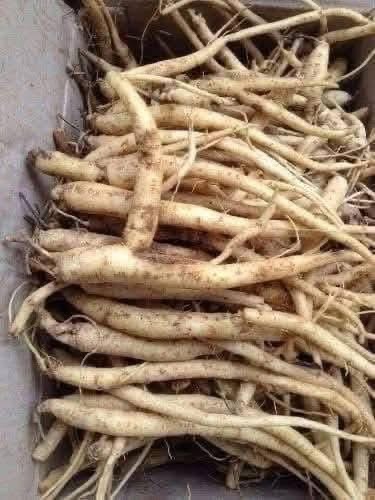
In the world of natural remedies, few plants have earned such widespread respect as Greater Burdock Root (Arctium lappa). With its long, tapering root and broad, heart-shaped leaves, burdock has been a staple in both traditional medicine and culinary practices across Asia, Europe, and North America. From ancient herbalists to modern researchers, this humble root continues to attract attention for its potential health-supporting properties.
While it is important to note that burdock is not a substitute for medical treatments such as chemotherapy, mounting scientific and anecdotal evidence suggests that it can play a supportive role in overall health and wellness.
A Glimpse Into History
Burdock root has been revered for centuries in Traditional Chinese Medicine (TCM), where it was used to “clear heat” and support detoxification. In European folk medicine, it was regarded as a “blood purifier” and a remedy for skin conditions such as acne, eczema, and psoriasis. Native American healers also brewed burdock root tea as a tonic for vitality and endurance.
Today, burdock remains a valued ingredient in Japanese cuisine (where it is called gobo), featured in stir-fries, pickles, and soups, showing its dual role as both medicine and food.
The Healing Potential of Burdock Root
Burdock root is loaded with bioactive compounds such as lignans, flavonoids, tannins, and polyphenols, which account for its wide-ranging health benefits. Here are some of the most researched and celebrated properties:
Rich in Antioxidants
Oxidative stress, caused by free radicals, is one of the main drivers of aging and chronic disease. Burdock root contains quercetin, luteolin, and phenolic acids, which neutralize harmful free radicals and may protect cells from premature damage.
Supports Immune Function
Early studies suggest that burdock root may stimulate immune response, helping the body mount defenses against infections. Its polysaccharides and inulin (a type of prebiotic fiber) may also strengthen gut health, which plays a key role in overall immunity.
Promotes Natural Detoxification
Historically called a blood purifier, burdock has been associated with improved liver and kidney function. These organs are crucial for detoxifying the body, and compounds in burdock may help enhance their natural ability to flush out toxins and metabolic waste.
Anti-Inflammatory Effects
Chronic inflammation is linked to conditions such as arthritis, cardiovascular disease, and skin disorders. Burdock’s active compounds appear to reduce inflammatory markers, making it potentially beneficial for soothing joint pain, swelling, and skin irritation.
Skin Health Booster
Applied externally or consumed as tea, burdock root has been used to treat skin problems like acne, eczema, and psoriasis. Its antibacterial and anti-inflammatory qualities may contribute to clearer, calmer skin.
Burdock Root and Cancer Support: What Does the Research Say?
One of the most fascinating aspects of burdock is its potential role in cancer support. While it is not a cure, studies suggest it may complement modern treatments:
- Antioxidant Protection – Burdock’s polyphenols may help protect cells from DNA damage that can lead to cancer development.
- Anti-Proliferative Activity – Lab studies have shown that burdock root extract may inhibit the growth of certain cancer cells, though more human studies are needed.
- Detoxification Aid – By supporting the liver, burdock may help the body process and eliminate toxins, which is especially valuable during conventional cancer treatments.
- Immune Support – A strengthened immune system can improve resilience during challenging therapies.
Interestingly, burdock root was one of the four herbs in the famous Essiac Tea, a traditional herbal blend promoted as a complementary cancer therapy in the 20th century. Though its effectiveness remains debated, its enduring popularity highlights burdock’s historical importance in alternative healing traditions.
Ways to Enjoy Burdock Root
Burdock root can be consumed in several ways, making it a versatile addition to wellness routines:
- Tea or Decoction – Simmer dried or fresh burdock root in water for 15–20 minutes to make a detoxifying tea.
- Capsules or Tinctures – Available in health stores for convenient supplementation.
- Culinary Uses – Slice and sauté fresh burdock (gobo) with carrots in soy sauce and sesame oil, or add it to soups and stews for a slightly earthy flavor.
- Topical Applications – Burdock-infused oil or creams may be used to soothe skin irritations.
Safety and Precautions
While burdock root is generally safe, some precautions should be noted:
- Allergies – People allergic to ragweed, daisies, or chrysanthemums may react to burdock.
- Pregnancy & Breastfeeding – Not recommended due to limited safety data.
- Diabetes – Burdock may lower blood sugar; monitor carefully if taking diabetic medication.
- Interaction with Diuretics – Burdock has mild diuretic effects, so caution is needed when combined with similar medications.
Always consult with a healthcare provider before adding burdock root to your wellness plan, especially if you are undergoing medical treatments.
Conclusion: A Root of Ancient Wisdom and Modern Potential
The mighty burdock root bridges ancient healing traditions with modern scientific interest. Rich in antioxidants, detoxifying compounds, and immune-supporting properties, it continues to earn recognition as a natural ally for health and wellness. While not a substitute for medical care, burdock root offers a gentle yet powerful way to support the body’s natural defenses, promote vitality, and enhance well-being.
In a world where people increasingly seek holistic and integrative health approaches, burdock root stands as a reminder that sometimes the most powerful remedies grow quietly beneath our feet.